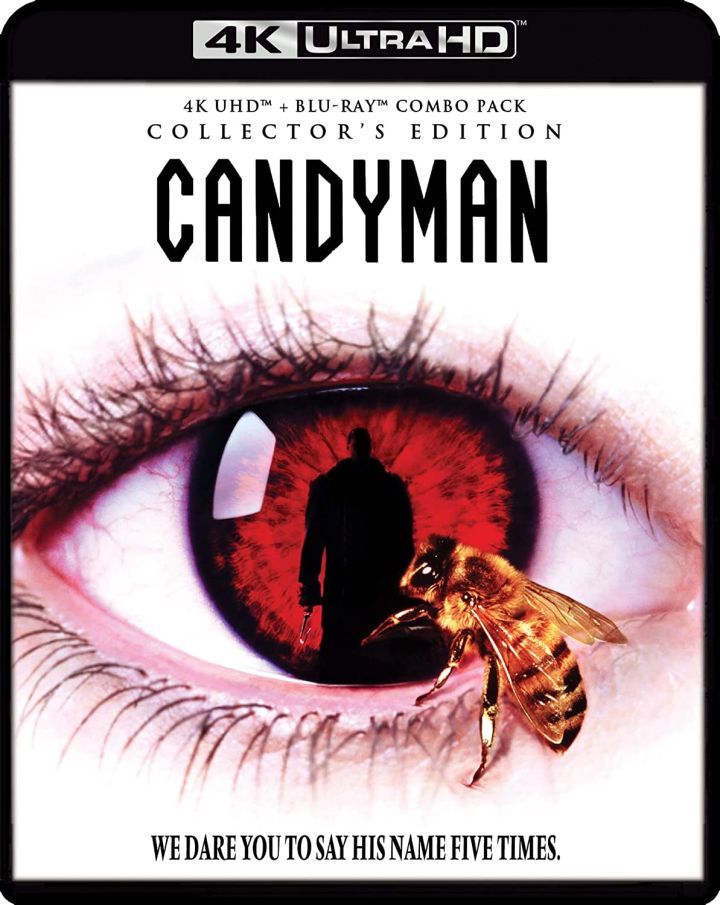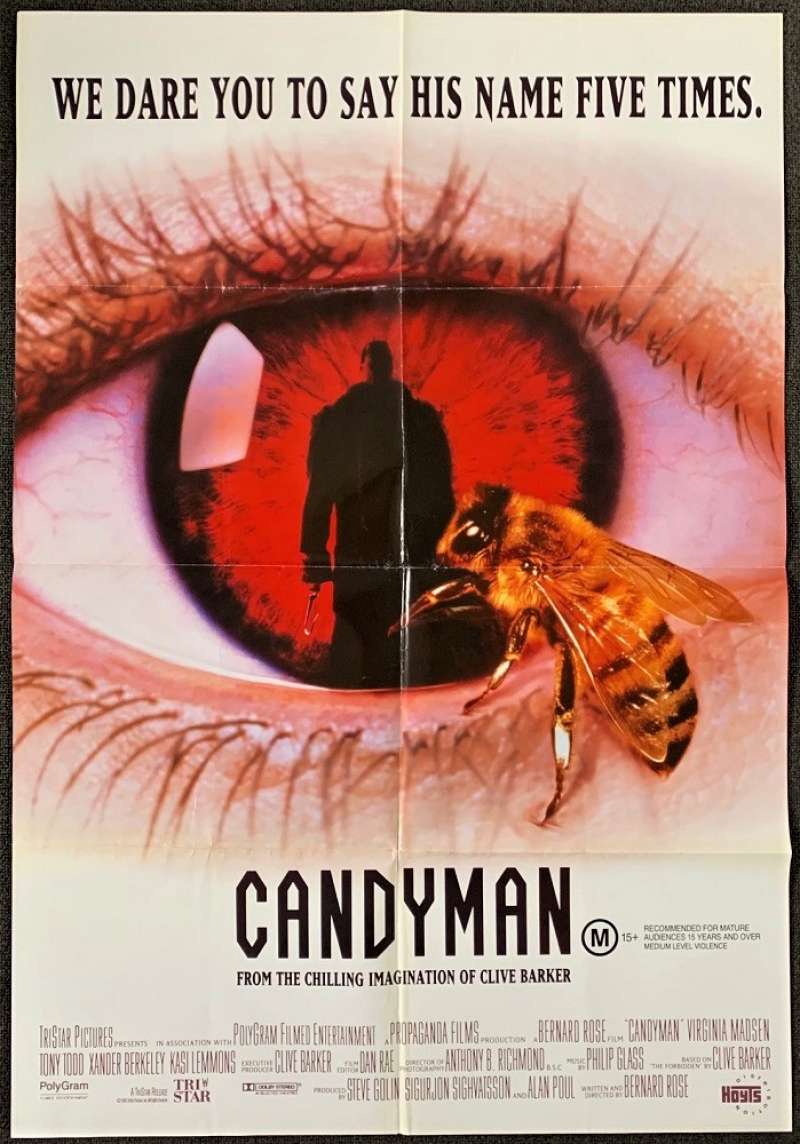Candyman (1992): A Bloody Reflection Of City Decay And Social Horror
Candyman (1992): A Bloody Reflection of City Decay and Social Horror
Associated Articles: Candyman (1992): A Bloody Reflection of City Decay and Social Horror
Introduction
On this auspicious event, we’re delighted to delve into the intriguing subject associated to Candyman (1992): A Bloody Reflection of City Decay and Social Horror. Let’s weave attention-grabbing data and supply recent views to the readers.
Desk of Content material
Candyman (1992): A Bloody Reflection of City Decay and Social Horror

Bernard Rose’s 1992 movie Candyman is not only a slasher; it is a chilling exploration of city decay, racial trauma, and the ability of myth-making in a society grappling with its personal darkish historical past. Whereas the movie delivers the visceral thrills anticipated from the horror style, its enduring energy lies in its unsettling commentary on social points, woven seamlessly into the material of its terrifying narrative. Out there on platforms like 123Movies (although accessing such websites carries authorized and moral dangers), Candyman stays a potent and related murals, demanding a deeper look past the hook-handed killer at its core.
The movie follows Helen Lyle, a graduate scholar researching city legends, as she delves into the story of Candyman, a vengeful ghost stated to seem when his title is invoked 5 occasions in a mirror. Helen, initially skeptical, finds herself drawn into the terrifying world of Cabrini-Inexperienced, a Chicago housing challenge suffering from violence and neglect. This setting is not merely a backdrop; it is a character in itself, reflecting the systemic inequalities and social injustices that gas the Candyman fable. The decaying buildings, the pervasive sense of concern and desperation among the many residents, all contribute to the movie’s ambiance of oppressive dread.
The legend of Candyman itself is a potent image of this social commentary. He was Daniel Robitaille, a Nineteenth-century African-American artist who was brutally murdered by a racist mob after falling in love with a white lady. His story, handed down by generations, is a testomony to the enduring legacy of racial violence and the silencing of marginalized voices. Candyman’s hook hand, a grotesque reminder of his violent demise, turns into a logo of the systematic oppression he endured. The movie subtly, but powerfully, connects his struggling to the present-day struggles of the Cabrini-Inexperienced residents, highlighting the cyclical nature of trauma and the methods wherein historical past continues to hang-out the current.
The movie cleverly makes use of the city legend as a automobile to discover themes of sophistication, race, and the ability of storytelling. Helen, a privileged white lady, initially approaches the Candyman legend with tutorial detachment, viewing it as a mere topic of her analysis. Nevertheless, as she turns into more and more entangled within the legend, she experiences a gradual shift in perspective. Her preliminary skepticism offers strategy to a rising understanding of the very actual penalties of the parable, each for the residents of Cabrini-Inexperienced and for herself. This transformation underscores the movie’s central message: tales, particularly these steeped in trauma and social injustice, have the ability to form actuality.
Tony Todd’s efficiency as Candyman is nothing in need of iconic. He embodies the character’s duality – a determine each terrifying and sympathetic, a sufferer of horrific violence who seeks revenge whereas concurrently embodying the ache of his previous. His presence is each imposing and magnetic, making him a very unforgettable antagonist. He transcends the standard slasher villain archetype, turning into a fancy character whose motivations are rooted within the social and historic context of his creation.
Past the chilling performances and the efficient use of suspense, Candyman masterfully employs visible storytelling. The movie’s cinematography is putting, using shadows, reflections, and the decaying structure of Cabrini-Inexperienced to create a visually arresting and unsettling ambiance. Using mirrors is especially efficient, serving as a visible metaphor for the reflection of societal ills and the cyclical nature of violence. The mirror turns into a portal, an area the place the previous and current collide, the place the legend of Candyman bleeds into the fact of Helen’s life.
The movie’s rating additional enhances its unsettling ambiance. Using dissonant sounds and unsettling melodies provides to the general feeling of unease, making a soundtrack that completely enhances the movie’s visible fashion. The rating isn’t simply background noise; it’s an energetic participant within the storytelling, amplifying the stress and constructing suspense.
Nevertheless, Candyman is not with out its complexities. Some critics have argued that the movie’s portrayal of Cabrini-Inexperienced would possibly perpetuate detrimental stereotypes about inner-city communities. Whereas the movie undeniably depicts the tough realities of poverty and violence, it’s necessary to acknowledge that it additionally presents a nuanced portrayal of the residents, showcasing their resilience, their neighborhood bonds, and their wrestle for survival amidst difficult circumstances. The movie’s energy lies in its capability to discover these complexities with out resorting to simplistic representations.
Moreover, the movie’s ending is open to interpretation, leaving the viewers to ponder the lasting affect of the Candyman legend and its potential to proceed haunting future generations. The paradox provides to the movie’s lasting energy, encouraging viewers to mirror on the themes of the movie lengthy after the credit roll. The ultimate scene, particularly, is a strong and unsettling reminder of the enduring nature of social injustice and the cyclical nature of violence.
The legacy of Candyman extends past its preliminary launch. The movie has garnered important acclaim and a faithful following, solidifying its place as a landmark achievement within the horror style. Its enduring reputation speaks to its capability to resonate with audiences on a number of ranges, addressing advanced social points whereas delivering an exciting and terrifying cinematic expertise. Whereas simply accessible by platforms like 123Movies, it’s essential to recollect the significance of supporting respectable streaming companies and respecting copyright legal guidelines. The movie’s highly effective message deserves to be seen in its supposed context, free from the moral and authorized considerations related to unauthorized streaming.
In conclusion, Candyman (1992) is greater than only a horror movie; it’s a social commentary wrapped in a chilling narrative. Its enduring energy lies in its capability to discover advanced themes of race, class, city decay, and the ability of myth-making, all whereas delivering a genuinely terrifying cinematic expertise. The movie’s masterful use of visuals, sound, and efficiency elevates it past the standard slasher movie, making it a very unforgettable and thought-provoking piece of cinema. Whereas accessible by varied means, it is a movie that deserves to be watched and appreciated by respectable channels, making certain its continued legacy and affect on the horror style and past.







Closure
Thus, we hope this text has supplied worthwhile insights into Candyman (1992): A Bloody Reflection of City Decay and Social Horror. We hope you discover this text informative and helpful. See you in our subsequent article!